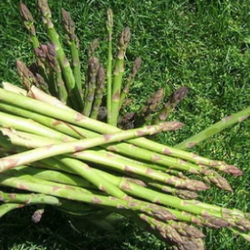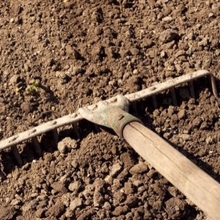Description
Not a fern at all, asparagus fern (Asparagus aethiopicus 'Sprengeri') is a member of the Asparagaceae family. Close examination reveals that unlike a true fern, this plant produces inconspicuous white flowers that later transform into red berries. The inch-long, needle-like “leaves” are actually short modified branchlets called cladodes, which appear along the thin stems so abundantly that the whole plant becomes a showy mound of bright green. The true leaves appear as dry scales along the stems, which also hide small thorns. Mature specimens can reach from 2 to 6 feet around.
History The asparagus fern’s scientific name derives from German botanist Carl Ludwig Sprenger, who is credited with its discovery in the Natal Province of South Africa. First introduced to the trade by an Italian seed company at the end of the 19th century, asparagus fern was documented in the 1900 “Cyclopedia of American Horticulture.” Its popularity as an ornamental plant soon spread on both sides of the Atlantic.
The asparagus fern’s scientific name derives from German botanist Carl Ludwig Sprenger, who is credited with its discovery in the Natal Province of South Africa. First introduced to the trade by an Italian seed company at the end of the 19th century, asparagus fern was documented in the 1900 “Cyclopedia of American Horticulture.” Its popularity as an ornamental plant soon spread on both sides of the Atlantic.
Use as a Houseplant
As the stems grow in length they adopt an arching habit, making this plant an excellent candidate for hanging baskets. Properly cared for, an asparagus fern can live for a long time, becoming an heirloom to pass on to the next generation. Like true ferns, the asparagus fern looks right at home in a sunroom or screened-in porch, where it adds appealing color and texture to any decor. You can also use stems of this plant to fill out cut flower arrangements.
Care
Although this plant tolerates some shade, it maintains the brightest color with a sunny exposure. Asparagus ferns appreciate being kept moist during the growing season and drier during the winter months. Although fairly drought tolerant, they begin shedding if allowed to dry out completely. Keep them looking full by trimming away old or tattered growth each spring; this will encourage the growth of healthy new stems. Feeding with an all-purpose fertilizer during the growing season will also help promote fullness. If repotting, do so in the spring before new growth commences. If desired, you can propagate asparagus fern by dividing the fleshy roots and potting them up in a light mixture of peat moss, loam and perlite.
 Invasive Species
Invasive Species
And now for this plant’s problematic side. Because it’s hardy in USDA zones 9 through 11, asparagus fern can take root in the wild in mild climates. Here it forms colonies along roadsides and in the forest understory, damaging the ecosystem by crowding out native species. Even a potted specimen on an outdoor patio can contribute to the problem, because birds eating the berries spread the plant’s seeds. The plant is listed by the Florida Exotic Pest Plant Council as a Category I invasive species. The University of Florida Center for Aquatic and Invasive Plants recommends that Florida residents not purchase, propagate or plant the asparagus fern. Gardeners in other parts of the country with year-round mild weather are wise to keep these plants indoors only.
Safety Precautions
The asparagus fern contains steroid compounds called sapogenins, toxic to both dogs and cats. Although the plant’s attractive red berries are not highly poisonous, ingestion can cause gastric upset resulting in vomiting and diarrhea. Repeated dermal exposure to the plant’s sap can cause allergic dermatitis in animals.
Don’t let the asparagus fern’s lacy, delicate looks fool you -- the stems conceal barely visible but extremely prickly spines. Handle them with care, or better yet, gloves.
References:
University of Oklahoma Department of Botany and Microbiology: Plant of the Week
University of Arkansas Division of Agriculture: Asparagus Fern
University of Florida Center for Aquatic and Invasive Plants:Asparagus Fern
ASPCA: Asparagus Fern
Photo Credits:
Thumbnail photo and asparagus fern with white flowers by adaduitokla (Ahmad Fuad Morad)
Asparagus fern in vase by kacleaveland (Kathy Cleaveland)
Asparagus fern with berries by ArturoYee

















